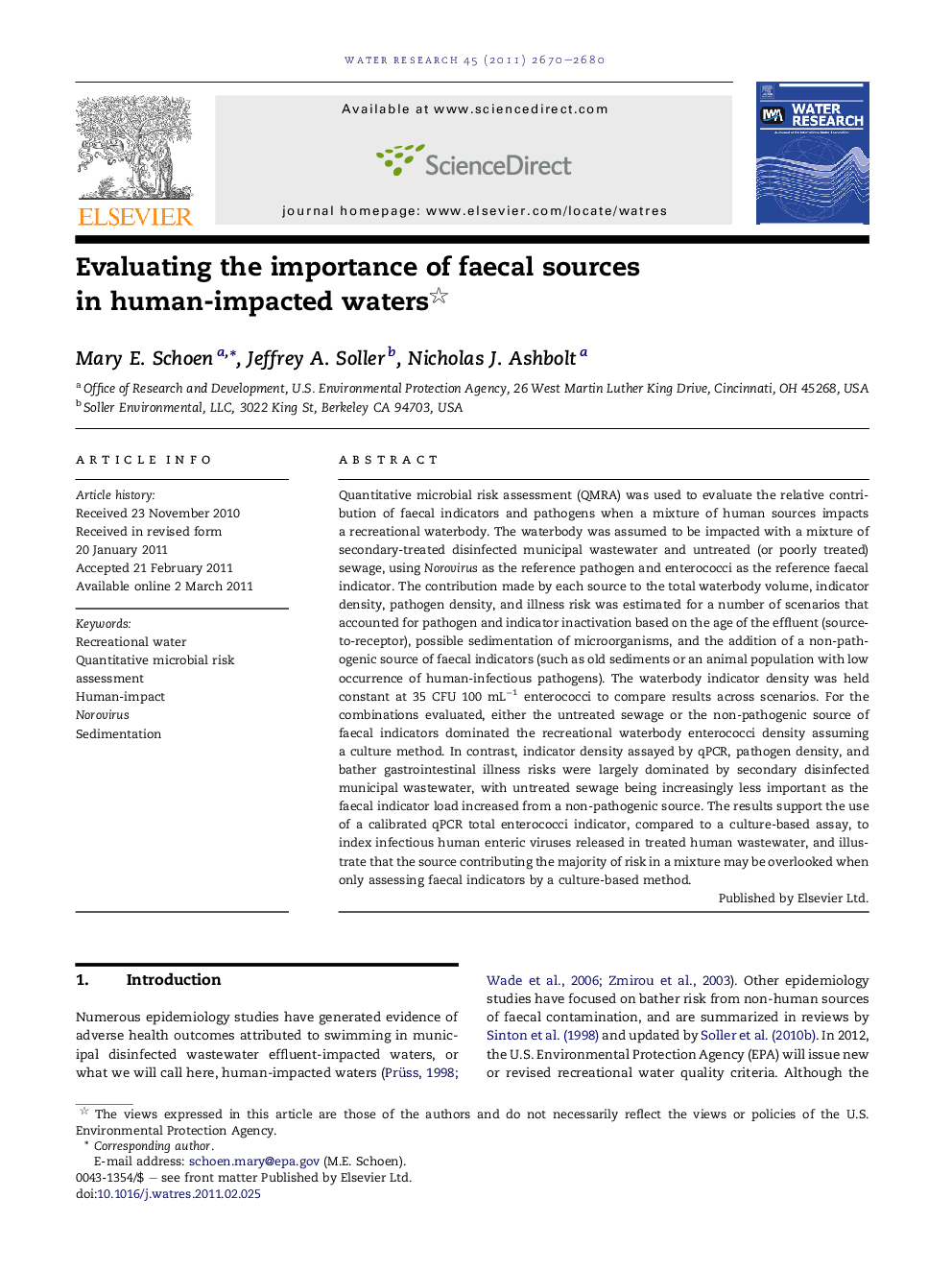| کد مقاله | کد نشریه | سال انتشار | مقاله انگلیسی | نسخه تمام متن |
|---|---|---|---|---|
| 4483590 | 1316892 | 2011 | 11 صفحه PDF | دانلود رایگان |

Quantitative microbial risk assessment (QMRA) was used to evaluate the relative contribution of faecal indicators and pathogens when a mixture of human sources impacts a recreational waterbody. The waterbody was assumed to be impacted with a mixture of secondary-treated disinfected municipal wastewater and untreated (or poorly treated) sewage, using Norovirus as the reference pathogen and enterococci as the reference faecal indicator. The contribution made by each source to the total waterbody volume, indicator density, pathogen density, and illness risk was estimated for a number of scenarios that accounted for pathogen and indicator inactivation based on the age of the effluent (source-to-receptor), possible sedimentation of microorganisms, and the addition of a non-pathogenic source of faecal indicators (such as old sediments or an animal population with low occurrence of human-infectious pathogens). The waterbody indicator density was held constant at 35 CFU 100 mL−1 enterococci to compare results across scenarios. For the combinations evaluated, either the untreated sewage or the non-pathogenic source of faecal indicators dominated the recreational waterbody enterococci density assuming a culture method. In contrast, indicator density assayed by qPCR, pathogen density, and bather gastrointestinal illness risks were largely dominated by secondary disinfected municipal wastewater, with untreated sewage being increasingly less important as the faecal indicator load increased from a non-pathogenic source. The results support the use of a calibrated qPCR total enterococci indicator, compared to a culture-based assay, to index infectious human enteric viruses released in treated human wastewater, and illustrate that the source contributing the majority of risk in a mixture may be overlooked when only assessing faecal indicators by a culture-based method.
► Ingestion of human-impacted water with a faecal indicator density at the recreational water quality limit resulted in a range of GI risk using QMRA.
► When GI risk was set at 0.03, secondary-treated disinfected municipal wastewater effluent was the major waterbody contaminant by volume.
► Enterococci assayed by culture was contributed mostly by untreated sewage or non-pathogenic faecal indicator sources.
► Whereas, enterococci estimated by qPCR was contributed by secondary-treated disinfected municipal wastewater effluent or non-pathogenic faecal indicator sources.
► Norovirus genome density and GI risk were contributed by a combination of untreated sewage and secondary-treated disinfected municipal wastewater effluent.
Journal: Water Research - Volume 45, Issue 8, April 2011, Pages 2670–2680